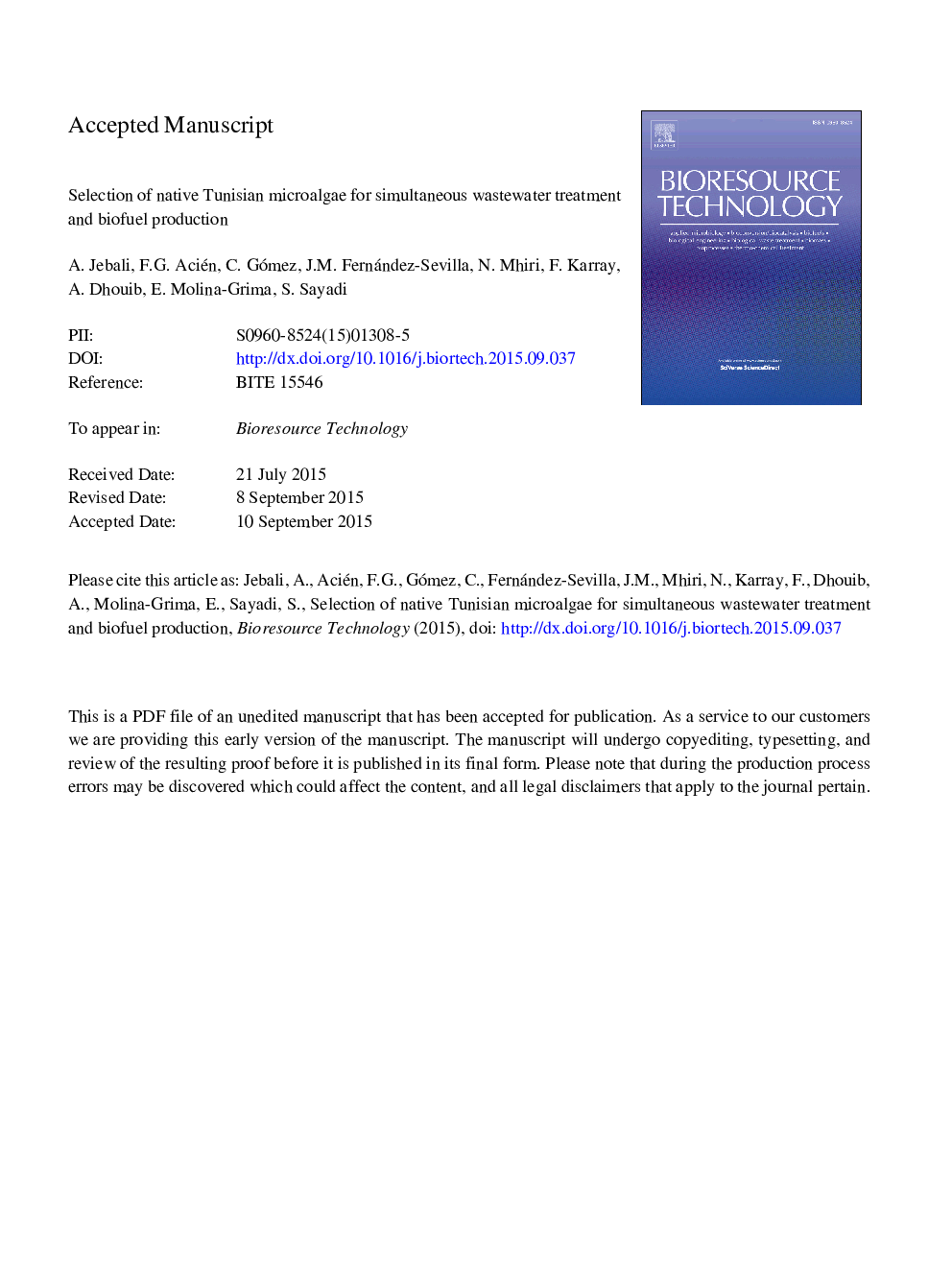| Article ID | Journal | Published Year | Pages | File Type |
|---|---|---|---|---|
| 679436 | Bioresource Technology | 2015 | 32 Pages |
Abstract
This paper focuses on the selection of native microalgae strains suitable for wastewater treatment and biofuel production. Four Chlorophyceae strains were isolated from North-eastern Tunisia. Their performances were compared in continuous mode at a 0.3 1/day dilution rate. The biomass productivity and nutrient removal capacity of each microalgae strain were studied. The most efficient strain was identified as Scenedesmus sp. and experiments at different dilution rates from 0.2 to 0.8 1/day were carried out. Maximal biomass productivity of 0.9Â g/LÂ day was obtained at 0.6 1/day. The removal of chemical oxygen demand (COD), ammonium and phosphorus was in the range of 92-94%, 61-99% and 93-99%, respectively. Carbohydrates were the major biomass fraction followed by lipids and then proteins. The saponifiable fatty acid content was in the 4.9-13.2% dry biomass range, with more than 50% of total fatty acids being composed of saturated and monosaturated fatty acids.
Related Topics
Physical Sciences and Engineering
Chemical Engineering
Process Chemistry and Technology
Authors
A. Jebali, F.G. Acién, C. Gómez, J.M. Fernández-Sevilla, N. Mhiri, F. Karray, A. Dhouib, E. Molina-Grima, S. Sayadi,
